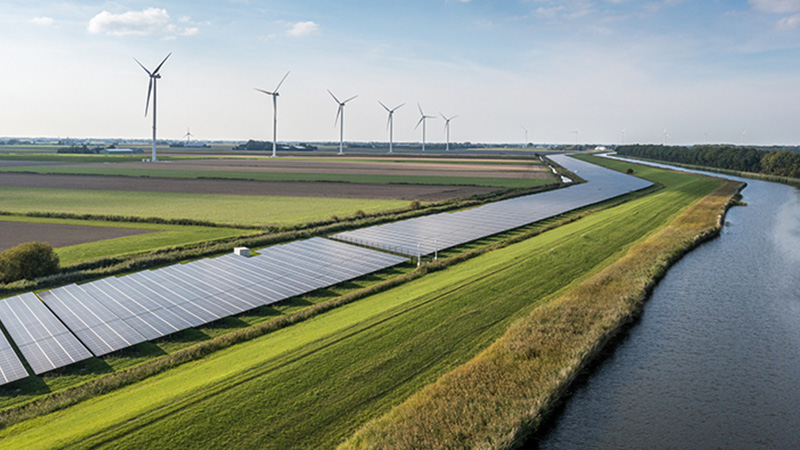It was already a tough environment for income-seekers, but the pandemic created a perfect storm.
For equity income, companies slashed dividends in expectation of a tougher trading environment or increased regulatory pressure; bond yields dipped to new lows as central banks lowered rates; rental yields fell as companies couldn’t pay their bills.
Are the prospects equally grim in 2021?
Developed market bonds offer precious little
There is little sign of interest rates rising in any of the major markets in 2021.
In mid-November, ECB president Christine Lagarde said all sectors of the economy “need to have confidence that financing conditions will remain exceptionally favourable for as long as needed – especially as the economic impact of the pandemic will now extend well into next year”.
This was a clear indication that it intends to keep rates low for long-term.
The Federal Reserve and Bank of England have made similar statements, with the Fed hinting that it will let inflation run higher until it is reassured of a sustainable recovery.
If anything, real yields may fall further next year as inflation expectations rise on the back of economic recovery.
Developed market bonds offer precious little for the income investor. The German 10-year bond yield is hovering at around -0.5%. The Greek 10-year bond yield sits at 0.7%, the highest in the eurozone, with Italy just behind at 0.65%.
There is little uplift for longevity – Italian 30-year bonds sit at 1.6%, behind the ECB’s target inflation rate of 2%.
So what about emerging market and corporate bonds?
Emerging market bonds have more to offer.
Benoit Lanctot, portfolio manager for macro strategies at JP Morgan Asset Management says the group has an overweight position in hard currency emerging market debt.
“A hard currency bond does well because the risk-free rate falls or credit spreads compress,” he says. “Credit spreads typically rally in the expansion phase of the cycle and we believe this will support hard currency bonds in emerging markets.”
He also points to the steep yield curves in a number of emerging markets, meaning investors are rewarded for taking positions in longer-dated bonds.
Corporate bonds appear to offer more for investors.
Fraser Lundie (pictured), head of credit at Hermes, says: “There is no doubt that the technical environment is an excellent one for credit. There is little-to-no yield to be found in developed-market sovereign debt, equity income is challenged, and credit spreads are close to historical averages.
“We have a less positive view on fundamentals, which in some respects are weaker than they have been for a decade.
“We will see defaults in 2021, combined with worryingly low recovery rates – a hangover from years of covenant light issuance coming back to bite.
“In such an environment, boosting yields needs to be done in a considered way. We see merit in taking subordination risk further down the capital structure among industry leaders.”
Avoid the seashore
Henderson’s fixed income team has coined the acronym ‘Beach’ for the sectors that need to be avoided in this environment – booking agencies, energy, airlines, cruises and hospitality.
On equity income, much still depends on the economic environment. With vaccines in prospect, there is greater visibility on earnings and a number of companies have sought to reinstate dividends.
The most important, from a European point of view, are the banks. ECB executive board member Yves Mersch told the Financial Times in late November that banks would be able to resume payouts early next year if their balance sheets show sufficient resilience.
However, some have still expressed reservations on the income recovery.
Duncan Lamont, head of research and analytics at Schroders, says dividend bear markets typically last far longer than total return bear markets.
“The median bear market for real (ie inflation adjusted) dividends has been nine years long, compared with only 1.8 years for real total returns. The implication is that, although companies normally restore dividends after a cut, they continue to grow more slowly than inflation for an extended period.”
There is also the problem of furlough. Many European governments have made it a condition of furlough payments that dividends can’t be paid to shareholders. That leaves companies with a tricky decision ahead.
Nevertheless, Lamont offers some hope: “Dividend cuts have been fast, comprehensive, and relatively indiscriminate. This has not been a drawn-out episode. This offers hope that, although the severity of the dividend bear market may be harsh, its duration may be shorter than average.”
Getting creative
The aggregate yield of the equity market is still notably higher than for bonds, at 2.3% for the Eurostoxx 50.
At a time when inflation may be re-emerging, equity income offers some protection. Equally, should recovery finally emerge, it seems likely that income stocks should do better.
This has already been seen to some extent with the market’s response to the vaccine, which favoured value – where there is a considerable cross-over with income.
However, there seems little doubt that investors are going to have to be more creative in the year ahead.
Specialist property may prove a fertile source of income: while some areas have struggled in the wake of covid-19 (notably those linked to energy pricing) areas such as digital infrastructure or logistics have seen dividends hold up well.
Equally, areas such as wind farms and renewables have a compelling yield in many cases and are likely to see a tailwind as investors look to add environmental and impact assets to their portfolios.
Blanket allocations to individual asset classes is unlikely to deliver a robust yield in 2021.
The outlook has fundamentally changed for many companies and investors need to be nuanced in their decision-making.
There are opportunities in equities, bonds and alternatives where yield has not yet been chased out of the market, but it requires real selectivity.
For more insight on continental European investment, please click on www.expertinvestoreurope.com










